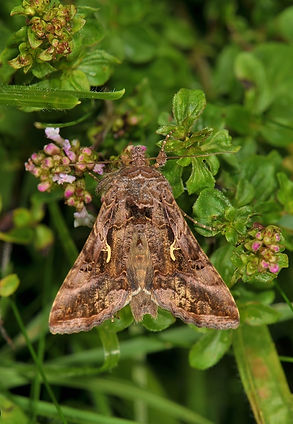
Ashley Whitlock
Hampshire & IOW Butterflies and Moths
Beacon Hill looking south-east
Beacon Hill Exton NNR

Silver Spotted Skipper Male and Female

Common Hare

Brown Argus

Red Kite

Duke of Burgundy

Adonis Blue has a small colony on site since a introduction from Old Winchester Hill a few years ago, and they may also fly over from OWH in favourable years.
Beacon Hill National Nature Reserve is a Site of Special Scientific Interest (SSSI), a prominent chalk hill at the western end of the South Downs, around 40 hectares in size. Take your time and explore the area around Beacon Hill, taking in the wonderful views, wandering along the paths.The woodland is mainly made up of Beech trees and has good stands of Bluebells and other early spring flowers, like Cowslips on the Eastern slopes, which are the food-plant of the very rare Duke of Burgundy Butterfly.
Over the past few years there has been concerted efforts to get the sward of the downland to a height where the Silver-Spotted Skipper Butterfly would naturally return in good number's, as it was in the 1980's and 1990's. Unfortunately when sheep and cattle are removed and grazing stops, the grass grows too high for this species to lay their eggs on the Sheeps Fescue, which normally grows around Rabbit burrows, and consequently the species here almost died out. Fortunately Old Winchester Hill, just a mile across the valley as the crow flies, has a very strong colony, therefore this species can naturally re-colonise this site without much help. The rabbit seems to be suffering as well and consequently there are not many rabbit burrows or 'scrapes' so a large scrape has been created on the south-western slope. I think this has helped tremendously in bringing this lovely insect back again in reasonable numbers and in 2020 there was a count of 30 odd individuals on the southern flanks of this site. There is now permanent cattle and sheep grazing, so please keep to the footpaths, and keep dogs on leads when encountering any of these animals.
On the downland, the going can be uneven and steep, but this is an excellent place for spotting butterflies such as the Chalk Hill Blue, the Silver Spotted Skipper, as well as the Brown Argus and Grizzled Skipper. A wide range of chalk grassland plants can be found throughout spring and summer, these include Wild Thyme, Clustered Bellflower, Common Rock rose, Horseshoe Vetch, Devils bit Scabious, and Restharrow.
This area is also a great place to see farmland birds such as Linnets and Yellowhammers, as well as Red Kites, Buzzards and kestrels. There are many sightings of summer migrants such as Whitethroats, Willow Warblers and Blackcaps, also the Hare can be seen scurrying around the grassland in the early mornings.

Silver -Y Moth

Devils Bit Scabious

Herdwick Sheep
Beacon Hill NNR from Old Winchester Hill NNR looking at the terrian , there are lots of small copses and hedgerows, where a lot of birds and invertibrates breed, especially along the Meon Valley Railway line which can be seen along the middle of this picture.